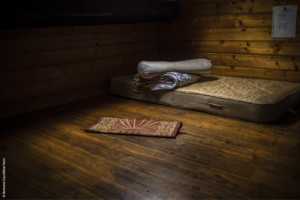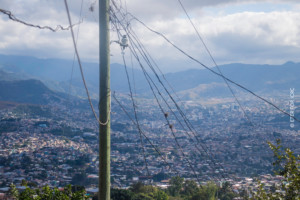After studying art and photography at the University of Paris 8, Sandra Calligaro oriented her career to the field reporting and went to Afghanistan for the first time in 2007. Since then, she has been living between Paris and Kabul, alternating reports for the French and European media, commissioning by NGOs and carrying more personal projects with a documentary focus. First headed to be a “war photographer”, it is – on the contrary – the vulnerability of the tormented country’s daily life that has continuously fascinated her; a country for which she offers a glance full of tenderness.
We publish here a selection from her last project, Afghan Stories: Waiting for Hope, produced in collaboration with Action against Hunger and ECHO. Apart from the pictures, it includes testimonies of Afghan-displaced populations.
Translated from the French by Audrey Sala
All pictures:
© Sandra Calligaro/Action contre la Faim/Picturetank
www.sandracalligaro.com


Nearly 40 years of conflict have deeply affected Afghanistan. Despite the stabilisation objectives of the country announced by the international community, the security situation continues to deteriorate. 2016 was indeed a particularly bloody year and 2017 has begun in violence. The Afghan civilians have paid a heavy price, as have health structures and humanitarian aid workers.
Jabor, 15 years-old (photo 3), Abdul Satar, 8 years-old (photo 4) and Abdul Sardar, 10 years-old (photo 5), are three of Mahajubeen’s children, Chaghcharan, Ghor Province :



Successive waves of violence have resulted in large population displacements, both within the country and into neighbouring countries (Iran and Pakistan). 2016 saw a new record in terms of population movement: more than 630,000 people fled their villages to safer places and more than 560,000 Afghans left Pakistan. Forced to return to their country of origin after more than 30 years, it is estimated that a total of 5.7 million of its exiled population have now returned to find themselves in serious difficulties, finding suitable shelter, providing for themselves and their families and having access to basic services. In addition, frequent waves of drought and natural disasters (floods, landslides, earthquakes) make the daily lives of millions of families across the country even more difficult. In addition, the United Nations estimate that more than 250,000 people are affected by natural disasters (floods, landslides, earthquakes) every year in the different regions of Afghanistan.

The current conflict continues to prevent NGOs from accessing certain areas of the country in order to assess the needs of populations and implement their programs. Essential services remain inaccessible for parts of the population, especially for rural communities and displaced persons. 2015 and 2016 were both record years in terms of the number of attacks on health services and workers: 125 attacks were reported in 2015, compared with 59 reported in 2014 and 33 in 2013. During the first half of 2016 alone, 64 attacks were reported.


The most vulnerable are once again the first victims: since 2013 the number of child victims has continued to increase year after year. In 2016, 2,461 child victims were counted, an increase of 15% compared to the figure in 2015. However, the number of children killed because of the conflict is less than 1 % of the number of children dying of malnutrition per year in Afghanistan. Acute malnutrition and severe acute malnutrition rates have been noted – sometimes well above emergency thresholds, particularly in camps for displaced persons.
It has been established that conflict and insecurity are the major obstacles when it comes to accessing necessary services and that these also have a huge impact on chronic malnutrition and stunting.

To respond effectively and rapidly to emergencies caused by sudden natural disasters and conflicts, the European Commission has set up an emergency response mechanism called the Emergency Response Mechanism (ERM). Funded by the European Commission’s Humanitarian Aid and Civil Protection Operations (ECHO) it aims to meet the increasing humanitarian and structural needs of populations.

The ERM was launched in Afghanistan in 2011. The implementation of the emergency response relies on a network of humanitarian organisations, which ensures a wide geographical coverage of the country. By providing these organisations with prior financial resources, ECHO ensures that they can provide a rapid humanitarian response to the immediate needs of communities affected by conflict or natural disasters.

The first step of action of the ERM is to collect and share information on the disaster in the shortest time possible. To reduce the impact of the disaster on families, the ERM carries out an accurate assessment of their needs and then offers them an adapted response. Finally, the mechanism attempts to facilitate humanitarian access in the country that has become particularly dangerous.

The ERM currently consists of eight international non-governmental organisations (NGOs): Action Against Hunger (ACF), Aid for Technical Cooperation and Development (Acted), the Danish Committee for Aid to Afghan Refugees (DACAAR), the Danish Refugee Council (DRC), Norwegian Refugee Council (NRC), People in Need (PIN), First International Emergency (PUI) and Solidarités International. All have long-lasting experience in Afghanistan and respect the charter of humanitarian principles – humanity, neutrality, impartiality, independence and transparency. The sectors covered by the ERM include economic interventions; water, sanitation and hygiene assistance; disaster risk management and reduction, protection and shelter; food security and nutrition.
To read the article in PDF please contact us.
ISBN of the article (HTML): 978-2-37704-244-9





